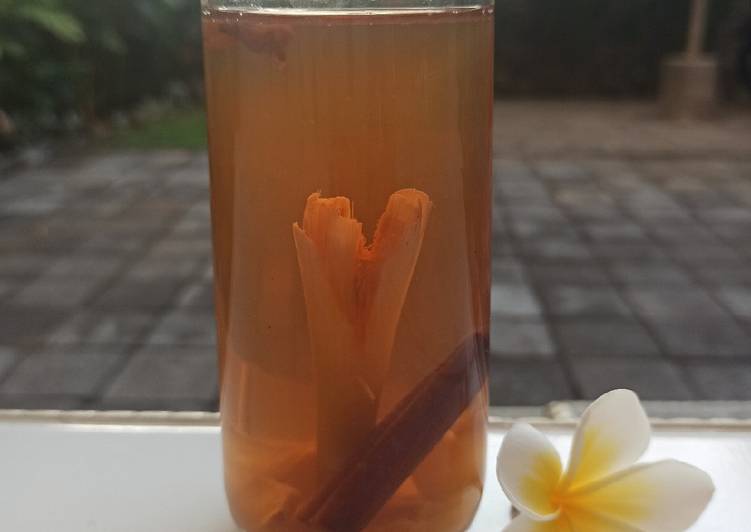
Hey everyone, it is Louise, welcome to my recipe page. Today, I’m gonna show you how to make a special dish, simmered okara with canned fish. It is one of my favorites. For mine, I am going to make it a bit tasty. This will be really delicious.
Fresh Okara from Aloha Tofu Factory. In the course of tofu production, okara is what remains after ground soybeans are filtered, with what passes through being soy A typical Okara dish Japanese and Okinawans prepare is Okara sauteed with a variety of root vegetables and/or fish cake, flavored with. This recipe for simmered okara, which combines soy sauce, carrots, sake, mirin, and few additional items, makes for a tasty combination.
Simmered Okara with Canned Fish is one of the most well liked of current trending foods in the world. It’s simple, it is quick, it tastes delicious. It’s enjoyed by millions every day. They are nice and they look wonderful. Simmered Okara with Canned Fish is something that I have loved my entire life.
To begin with this recipe, we must prepare a few ingredients. You can cook simmered okara with canned fish using 5 ingredients and 10 steps. Here is how you cook that.
The ingredients needed to make Simmered Okara with Canned Fish:
- Prepare 150 grams Fresh okara
- Take 1 your choice Leftover vegetables
- Prepare 1 tbsp of each Sake, soy sauce, mirin, sugar
- Get Optional (mackerel, pacific saury, tuna, etc.)
- Prepare 1 can Canned fish
You can also sometimes buy it from Asian markets, usually frozen. When I reference wet okara, I mean okara that has been squeezed by hand in muslin to extract as much soy milk as possible. Because the ratio of liquid to soy waste will vary in this process, I highly recommend weighing your okara and all other ingredients. As you all know, fish is central to Japanese food culture.
Steps to make Simmered Okara with Canned Fish:
- Vegetables: carrot, daikon radish, Japanese leek, burdock. Just using scraps is fine! If available, use kamaboko, konnyaku noodles, or aburaage!
- ou can use anywhere from 70-180 g of canned fish, it doesn't matter! Canned salmon will work well with this.
- The okara will probably expand more than you think. Since you can store it in the freezer, use half of a 350 g bag and store the rest.
- Stir-fry the vegetables in oil. If you have kamaboko or aburaage, add them here. The photo shows 3 cm of daikon, 3 cm of carrot, 5 cm of leek, and a handful of daikon leaves.
- Add the okara (if frozen, thaw it out first) and canned fish to the frying pan. You don't need to break apart the fish. Since you will use the juices from the can, don't throw it out.
- Let's make this simple. While cooking, the canned fish will break apart. If there are still some large pieces, don't worry as this will be simmered as well.
- Add enough water to just cover the okara mixture. Since the flavor will depend on the type and amount of canned fish, for now just use the canned juices and 1 tablespoon each of the flavoring ingredients.
- Boil the okara until the liquid evaporates. Stir it occasionally. When it becomes the texture you want, taste it.
- If you want a thicker flavor, add 1/2 tablespoon of each flavoring ingredient until the flavor is what you want. Make sure to evaporate the excess liquid. There's a bitter taste, so don't forget the sugar!
- I made it with 160 g of okara, 80 g of canned Pacific saury, 600 ml of water, and 1.5 tablespoons of each of the condiments.
There are many traditional ways of preparing and Since Nitsuke is a generic term for simmered fish, the name of the dish always uses with the name of the fish at the beginning, like today's dish Karei no Nitsuke. Our theme for this episode is simmering. Okara is a byproduct of making tofu, an iconic Japanese ingredient. We'll be using okara and plenty of dashi, simmered together to make the popular dish unohana-ni. By adding richly flavorful ingredients to the bland okara.
So that is going to wrap this up with this special food simmered okara with canned fish recipe. Thank you very much for reading. I am sure that you will make this at home. There’s gonna be more interesting food in home recipes coming up. Don’t forget to bookmark this page on your browser, and share it to your family, colleague and friends. Thank you for reading. Go on get cooking!


